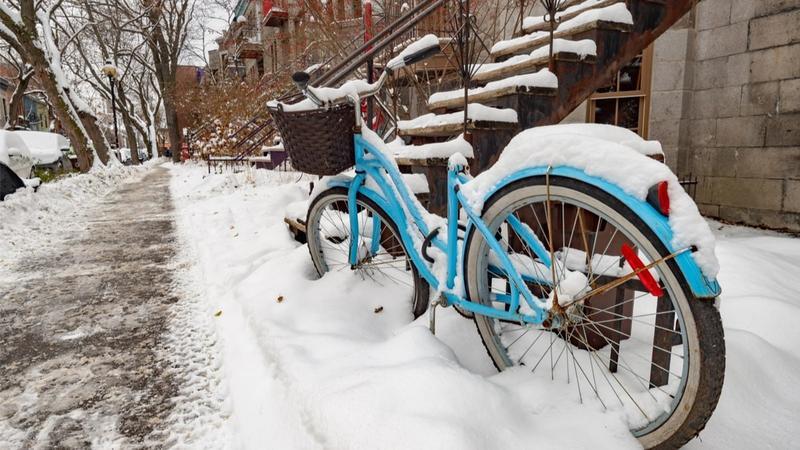Do you long for the warm summer days when you could just jump on your bike and go for a ride? Don’t stop there. It’s still possible even in the dead of winter. While you should never ride under icy conditions, here are some tips to continue the cycle, and put the pedal to the metal this winter safely, warmly and efficiently.
Before You Head Out...Check Your Winter Cycling Gear
- If you have a long commute, don’t overdress. The longer the ride, the more likely you’ll work up a sweat, giving you a chill. If you have a short commute, wear more layers as your body will have less time to warm up.
- Reduce bulk by wearing thin, lightweight, breathable, wind resistant layers.
- Avoid cotton – it will absorb sweat and keep it next to your skin, making you wet and cold (this goes for socks too).
- Stop heat from escaping through your head with a toque, facemask, or a balaclava. Make sure any head gear fits snugly under your helmet.
On The Winter Road
- Winters mean longer nights and less visibility. Stay visible to drivers and pedestrians by wearing bright-coloured or reflective clothing and using rechargeable bicycle lights. This is the law in some provinces, and you can face fines up to $500 for not having proper lights in Ontario.
- Be prepared to ride further out into a lane if snow banks make the road narrower. Obey traffic signals and shoulder check and signal before you move. Police can still issue tickets in the form of fines to cyclists who break the rules of the road.
- Did you know? In most parts of the country, you will not earn demerit points for tickets received while cycling. These tickets will not affect your driving record or car insurance premiums, unless you live in Quebec where demerit points will be added to your driving record, even if you don’t have a licence at the time.
- If you get into an accident with another cyclist or a pedestrian, you may be covered under your home or tenant insurance policy. Your bike is considered "personal property", so your insurance may pay the damages caused from a collision.
- In the case of an accident with a motorist, bicyclists may be entitled to some coverage under their own car insurance policy if they have one. If a cyclist is not listed on a policy, they could file a claim under the driver’s policy—even if the cyclist is at fault. In Ontario, "Statutory Accident Benefits" cover expenses such as medical rehabilitation, attendant care, and caregiver costs, with varying coverage depending on the severity of the accident.
- In any and every case of an accident, you should collect evidence (pictures, witnesses, police reports, etc.) to protect yourself in the event that you need to make a claim or defend yourself against a claim.
Maintenance for your Winter Bike
- In the winter, you may warm up your car, but you need cool down your bike. Leave your bike outside before you ride. Less snow will stick to it if it's already cold.
- All the snow, salt and dirt will leave your bike prone to rust. Keep your bike covered when parked. Try to wipe it down at the end of the day to remove salt build-up. Also, putting a drop of oil at the end of each wheel spoke can also slow down corrosion.
- Carry a plastic bag to cover your seat from rain and snow while the bike is parked.
- If your bike is worth a lot of money, you can cover it by "scheduling" it into your home, condo or tenant insurance policy. This is a special clause in your policy that covers the full value of the bike if it is stolen or damaged.
You may be skeptical about taking your bike out this winter, but don’t let the weather stop you in your tracks. There are still ways to make winter biking work for you.
